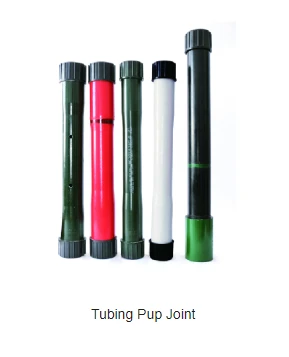- Afrikaans
- Albanian
- Amharic
- Arabic
- Armenian
- Azerbaijani
- Basque
- Belarusian
- Bengali
- Bosnian
- Bulgarian
- Catalan
- Cebuano
- Corsican
- Croatian
- Czech
- Danish
- Dutch
- English
- Esperanto
- Estonian
- Finnish
- French
- Frisian
- Galician
- Georgian
- German
- Greek
- Gujarati
- Haitian Creole
- hausa
- hawaiian
- Hebrew
- Hindi
- Miao
- Hungarian
- Icelandic
- igbo
- Indonesian
- irish
- Italian
- Japanese
- Javanese
- Kannada
- kazakh
- Khmer
- Rwandese
- Korean
- Kurdish
- Kyrgyz
- Lao
- Latin
- Latvian
- Lithuanian
- Luxembourgish
- Macedonian
- Malgashi
- Malay
- Malayalam
- Maltese
- Maori
- Marathi
- Mongolian
- Myanmar
- Nepali
- Norwegian
- Norwegian
- Occitan
- Pashto
- Persian
- Polish
- Portuguese
- Punjabi
- Romanian
- Russian
- Samoan
- Scottish Gaelic
- Serbian
- Sesotho
- Shona
- Sindhi
- Sinhala
- Slovak
- Slovenian
- Somali
- Spanish
- Sundanese
- Swahili
- Swedish
- Tagalog
- Tajik
- Tamil
- Tatar
- Telugu
- Thai
- Turkish
- Turkmen
- Ukrainian
- Urdu
- Uighur
- Uzbek
- Vietnamese
- Welsh
- Bantu
- Yiddish
- Yoruba
- Zulu
Aluminum Pipe Connectors and Accessories for Efficient Piping Solutions
Aluminum Pipe Couplings and Fittings An Overview
When it comes to piping systems in various industrial, commercial, and residential applications, aluminum pipe couplings and fittings play a vital role. These components are essential for connecting two or more sections of piping, providing the necessary strength and flexibility to manage different fluids, gases, and pressures. This article will explore the types, benefits, applications, and considerations related to aluminum pipe couplings and fittings.
Types of Aluminum Pipe Couplings and Fittings
Aluminum couplings and fittings come in a variety of types, each designed for specific applications and performance requirements. Here are some common types
1. Couplings These are simple connectors that join two lengths of pipe. They can be straight, reducing, or rigid couplings, depending on whether they connect pipes of the same diameter or transition between different sizes.
2. Elbows These fittings allow for directional changes in the piping system. Aluminum elbows are available in various angles, commonly 45 degrees and 90 degrees, to suit specific routing needs.
3. Tees These fittings enable the branching of pipes. An aluminum tee fitting allows for two pipes to connect at a right angle, which is indispensable in many piping layouts.
4. Reducers A reducer fitting is used to connect pipes of differing diameters, enabling efficient flow transitions within the system.
5. Caps and Plugs These fittings are used to seal the ends of pipes. Caps close off the end of the pipe, while plugs can seal the threaded openings in fittings.
6. Flanges Flanges provide a method to connect piping by creating junctions that can be easily disassembled for maintenance, cleaning, or alteration of the piping configuration.
Benefits of Aluminum Pipe Couplings and Fittings
Aluminum pipe couplings and fittings offer several advantages over alternatives such as steel or plastic variations
1. Lightweight Aluminum is significantly lighter than steel, making it easier to handle, transport, and install. This characteristic is particularly beneficial in large-scale projects where reducing weight is crucial for structural integrity.
2. Corrosion Resistance Aluminum naturally forms a protective oxide layer, providing excellent resistance to corrosion. This makes it suitable for applications involving moisture, chemicals, or harsh environments.
aluminum pipe couplings and fittings

4. Cost-Effectiveness Compared to other metals, aluminum is relatively inexpensive, making it an economical choice for piping systems.
5. Recyclability Aluminum is highly recyclable, which is an attractive feature for environmentally-conscious projects. Using recycled aluminum can also lead to cost savings and reduced environmental impact.
Applications of Aluminum Pipe Couplings and Fittings
The versatility of aluminum pipe couplings and fittings allows them to be used in numerous applications, including but not limited to
- HVAC Systems They are commonly used in heating, ventilation, and air conditioning systems where lightweight and corrosion-resistant piping is required. - Automotive Industry Used in fluid and gas transport systems, aluminum fittings help in maintaining optimal performance and safety in vehicles.
- Chemical Processing Their corrosion resistance makes them ideal for transporting corrosive substances in chemical plants.
- Marine Applications Due to their resistance to seawater corrosion, aluminum fittings are often used in boat and marina scenarios.
Considerations When Using Aluminum Pipe Couplings and Fittings
While aluminum pipe couplings and fittings are beneficial, there are important considerations to keep in mind
1. Temperature Sensitivity Aluminum can be sensitive to extreme temperatures. Ensure that selected fittings can handle the thermal requirements of the specific application.
2. Compatibility with Other Materials When aluminum is connected to other metal pipes, such as steel, consideration must be given to galvanic corrosion, which can occur when different metals are in contact in the presence of an electrolyte.
3. Sizing and Specifications Proper sizing is crucial for ensuring optimal flow and system efficiency. Always consult with industry standards and guidelines when specifying fittings.
4. Installation Practices Proper installation techniques are essential to prevent leaks and system failures. Providing training and resources for installers can mitigate these risks.
In conclusion, aluminum pipe couplings and fittings are invaluable components in a wide range of piping systems, known for their lightweight nature, corrosion resistance, and strength. Understanding the types, benefits, applications, and considerations surrounding these fittings can lead to more efficient and durable piping solutions in various industries.
-
Tubing Pup Joints: Essential Components for Oil and Gas OperationsNewsJul.10,2025
-
Pup Joints: Essential Components for Reliable Drilling OperationsNewsJul.10,2025
-
Pipe Couplings: Connecting Your World EfficientlyNewsJul.10,2025
-
Mastering Oilfield Operations with Quality Tubing and CasingNewsJul.10,2025
-
High-Quality Casing Couplings for Every NeedNewsJul.10,2025
-
Boost Your Drilling Efficiency with Premium Crossover Tools & Seating NipplesNewsJul.10,2025







